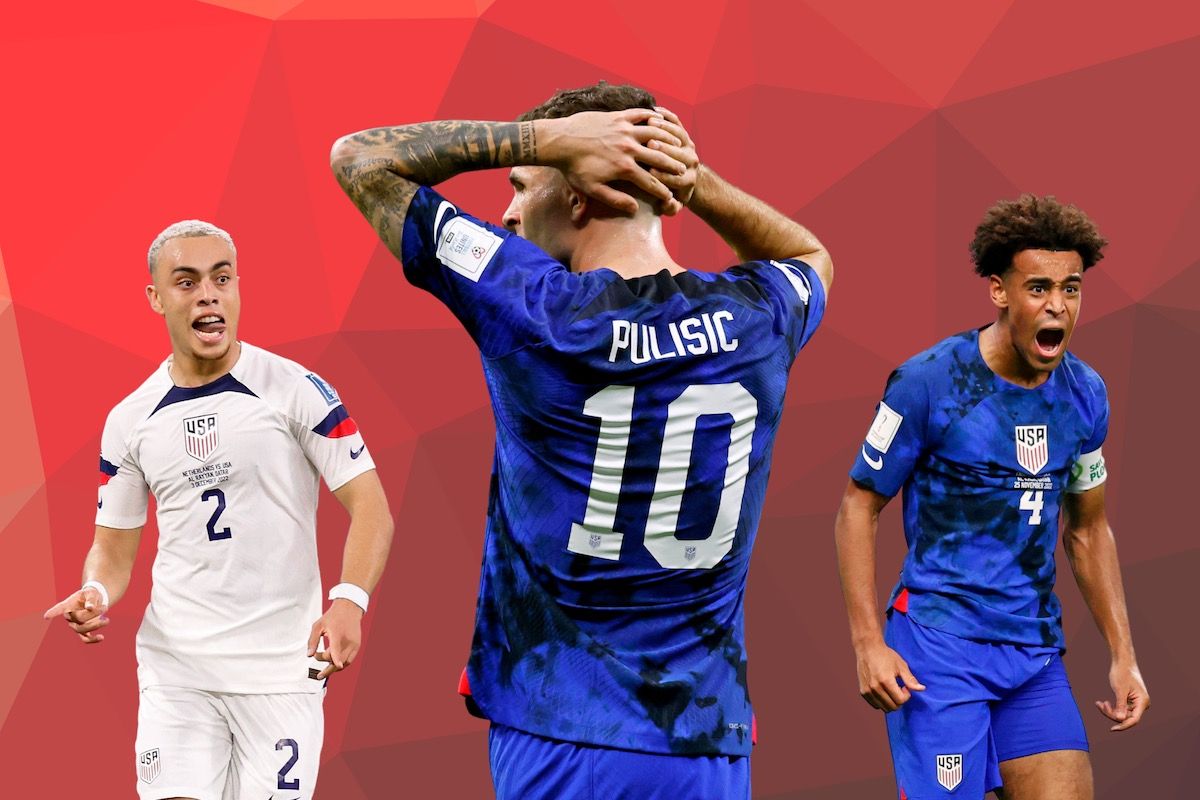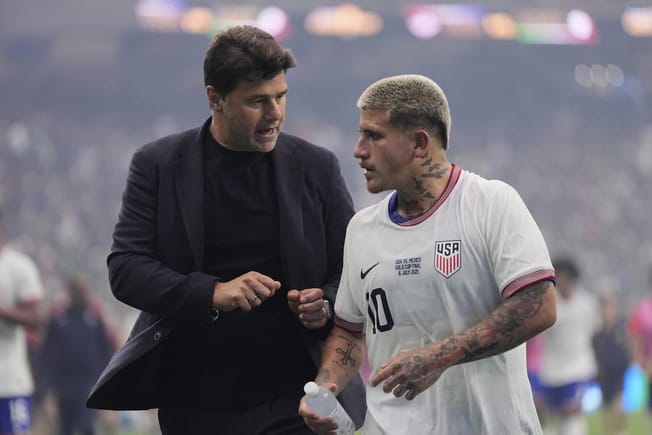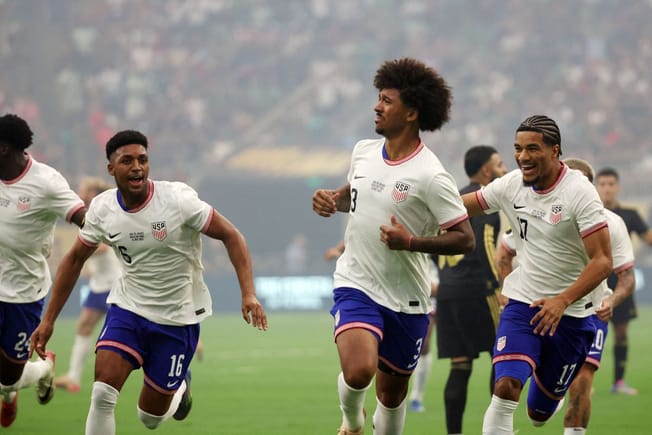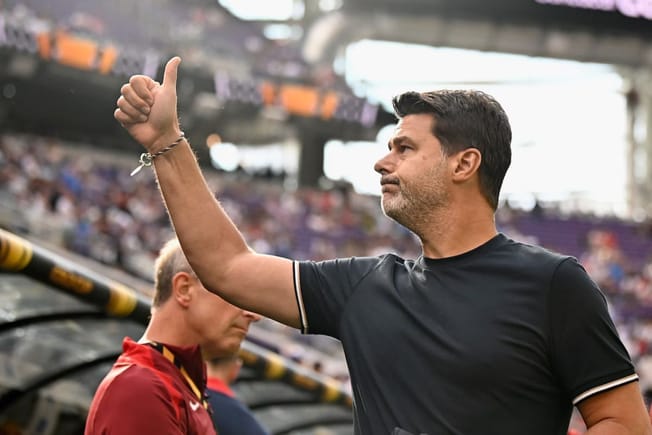Quick Hits
- The United States’ World Cup loss to the Netherlands reminded us that while the team has talent, there’s more work to do ahead of the 2026 tournament
- We’re examining how the US can grow by looking at one way each core USMNT player can improve their game over the next few years
The flaws were exposed a little, weren’t they?
In their matchup against the Netherlands in the Round of 16, the United States finally had themselves a game against an elite team that actually wanted to beat them. Let’s not kid ourselves, Garry and England were content with a draw during the group stage. The Dutch ran at the US. The Dutch tested the US. And the Dutch ultimately beat the US, shining a light on some of the cracks in the United States’ young, but extremely promising core along the way.
Don’t get me wrong: there was plenty to like about the United States men’s national team at this World Cup. But the USMNT’s tournament exit serves as a reminder that the team has more work to do before they’ll be really ready to make noise at the World Cup.
Today, with one eye looking off into the distance towards 2026, we’re examining how the US can close the gap. We’re looking at one way each core USMNT player can improve their own game ahead of the next World Cup. To limit debate, we’re only including players under 25 who Gregg Berhalter selected for his 2022 World Cup roster.
Let’s get to it.
CHRISTIAN PULISIC
Thing to improve: Passing into the box
Christian Pulisic is good — great, even — at a lot of things. He’s a strong dribbler, he can be very useful in attacking transition, and he’s not afraid to lay it all on the line to slam the ball home after a smart off-ball run.
The main thing that Pulisic isn’t very good at, though, is the one thing that the United States need most: reliable, effective passing into the box.
You’ll start to sense a theme here as we go through the United States’ core players. The team lacks lock-pickers, which was made clear by watching them try to whittle a piece of wood into something resembling a key as they moved through the World Cup. Now, there were moments when Pulisic and co. actually turned their block of wood into a key. Pulisic’s through ball to Tim Weah on the team’s first goal of the tournament was a prime example.
TIM. WEAH. 🇺🇸
— FOX Soccer (@FOXSoccer) November 21, 2022
A beautiful goal for the @USMNT 👏 pic.twitter.com/O0B1m8iDGq
But that goal? It came in transition, not in possession. The US will take Pulisic’s chance-creation in transition, but they need more players who can draw defenders in before spitting out the ball to a teammate in the box.
Pulisic, whether it’s from set pieces or open play, struggles with that. According to FBref, he’s in just the 19th percentile in expected goals assisted over the last calendar year in Europe’s top five leagues among his positional peers. Pulisic is also only in the 24th percentile in passes into the final third and the 5th percentile in passes into the penalty area.
Those numbers, uh, aren’t great.
And they’re even less great when you factor in that he’ll be a couple of years past the usual prime for a winger by the time the 2026 World Cup rolls around. If Pulisic doesn’t develop his passing game en route to becoming a more well-rounded attacking player, he’s at risk of regressing over the next few years. But if he improves on set pieces and quick releases in the final third? We’re looking at a whole new Christian Pulisic.
GIO REYNA
Thing to improve: Scoring threat
The actual answer for Gio Reyna is just “stop being injured”, but seeing as how that’s at least partially outside of his control, I’ll zoom in on something else instead. Reyna is already the best playmaker in the senior player pool right now. So if we’re looking at ways he can improve, the next thing that comes to mind is his goal threat.
We didn’t see much of Reyna at this World Cup, but we do know from his time with Dortmund that his underlying expected assist numbers are generally better than his underlying expected goals numbers.
Translation? Reyna is better at providing for others than he is at getting his own. Now, part of that is a role thing. Reyna doesn’t always play on the wing or in the halfspaces at club level, which means he’s not always encouraged to drop his shoulder, beat somebody, and fire off a shot on goal. But the best version of Reyna is undoubtedly a mixture of “chance creating Gio” and “I’m gonna get mine Gio”. Let’s just hope his legs hold out long enough for us to see those two Gios merge into one.
BRENDEN AARONSON
Thing to improve: Anything that isn’t pressing
Call me crazy, but I’m starting to think that the Philadelphia Union to RB Salzburg to Leeds United player development pathway might not be the best one for creating well-rounded soccer players.
Brenden Aaronson first broke out in Major League Soccer when he was asked to press and break up plays as a No. 10 with the Union. Then he moved to Austria to do virtually the exact same thing for an equally press-y team. Now he’s playing the Premier League for Jesse Marsch, and, well, you get the idea.
Aaronson is an off-the-charts presser. He works incredibly hard and could make a living off of that skill alone over the next decade. But to grow into a bigger role with the USMNT, the 22-year-old needs to work on the rest of his game. Aaronson has shown flashes of brilliance on the ball in his young professional career – turning those flashes into a nearly constant stream of light will upgrade him from a reserve attacking option to an indispensable player.
Brenden Aaronson is a baller. #USMNT #LUFC
— 🇺🇸 USMNT CORNER 🇺🇸 (@USMNTCORNER) July 18, 2022
pic.twitter.com/HNInzv18oK
TIM WEAH
Thing to improve: One-v-one dribbling
I don’t know what it is about Tim Weah. He has skill. He has speed. He’s the locker room DJ. He even played a few games for PSG way back when.
Weah has all the makings of a top-tier dribbler, but he just…doesn’t dribble.
According to FBref, Weah has averaged 1.67 attempted dribbles per game over the course of his career. For context, Neymar (who checks more than a few of the same boxes up above that Weah does) has averaged 8.41 attempted dribbles per game in his career. Now, a contest between Weah and Neymar isn’t a fair fight given that Neymar is one of the best players to ever touch a soccer ball.
But how about Pulisic? He’s averaged 5.96 dribbles per 90 minutes. Okay, that one isn’t fair either. So much of Pulisic’s game is based on dribbling. Weah likes to hang out in slightly wider areas, he often runs in behind, and he tracks back defensively. How about Reyna and his 3.41 attempted dribbles per game, then? Or Aaronson and his 3.23 per game?
The truth is that Weah just doesn’t like to dribble. Or, maybe he just doesn’t dribble. Either way, adding a new way to get underneath a defender’s skin would go a long way for Weah ahead of 2026.
THE MIDFIELD
Thing to improve: Passing
Tyler Adams, Weston McKennie, and Yunus Musah are all very different players.
Adams is a destroyer who mops up just about everything in midfield (except, well, you know…). McKennie is a roamer, who does a bit of everything. Musah is a glider, who loves to get on the ball and dribble right past you in central areas. They’re all different, but the next evolution for all three players is virtually the same. To raise their individual ceilings, each will want to improve their passing games.
Musah doesn’t love passing the ball — and when he does, his passes aren’t always played to the correct foot or with the correct weight. McKennie has some lovely passes in his arsenal, but lacks consistency. Adams, for his part, can connect play, but doesn’t typically open up the game with influential switches.
As the United States continue to accumulate more talent, more of their opponents will bunker, forcing the US to find a way through a compact block. The Netherlands did it. Iran did it. England kind of did it. And Wales did it. So if Adams, McKennie, and Musah start to influence the game more with their passing, the United States will be that much more difficult to stop.
SERGIÑO DEST
Thing to improve: Defensive consistently
Facing the nation of his birth at a World Cup? That’s huge. Facing the nation of his birth at a World Cup and clowning more than a few opponents in the process? That’s Sergiño Dest, baby. Unfortunately for the United States, you know what else is Sergiño Dest?
This. This right here.
This guy? pic.twitter.com/tI4QtWlDHI
— Fat Guy Running🏃♂️☮️ (@TheButterfas) December 4, 2022
During the buildup to the Netherlands’ second goal on Saturday, this was Dest’s body positioning. Flat-footed and unaware, Dest was beaten to the ball by Daley Blind and was forced to watch as the US fell into an even deeper hole in the Round of 16. A lack of defensive awareness has been one of the major knocks on Dest for years now, ever since he was rising up the US youth national team ranks.
The other major knock? For all of his skill, Dest doesn’t produce quite enough. He’s a just-above-average shot-creator at the fullback spot, not an elite shot-creator. That hurts — and it’s something that Dest should work on— but it doesn’t hurt as much as his defensive lapses.







Comments